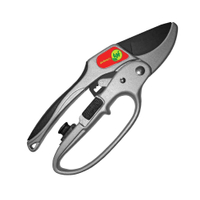Can Al make you a better gardener? I put ChatGPT to the test
Will yard work ever be the same again?

I must admit, I was a bit skeptical when I was asked to have a go at using AI to see if it could help me become a better gardener. Although I’ve recently started using planting apps to help identify blooms in the local neighborhood, that was as far as my experience went. It felt like another level to ask ChatGPT what I should be doing, when I've previously done the research myself or asked for advice.
Successful gardening depends on several variables, including soil type, climatic conditions, and geographic location. I wondered how AI would be able to take in all these variables specific to my plot and provide me with accurate advice.
If you’re not a trained gardener with years of experience, there is no way of knowing if the information you are being presented with is correct. Garden consultant, Andrea Whitley, shares these concerns in her blog and questions zone information. “There is a shortage of good zone-based information” because “AI is not currently linked to weather zones”.
However, despite my initial concerns, I wanted to stay open to how AI could help me in my yard, so I put a plan together, including six main areas to cover, with questions. Here’s how I got on.
1. Soil type and pH level

Prompt: “How do I determine the type of soil and pH level in my yard Depending on which plants I buy, what steps might I need to take to improve my soil?”
The answer was fairly extensive and I was surprised at the level of content. ChatGPT outlined the importance of determining the correct soil type and pH level in my yard, declaring that it will ensure the healthy growth of plants. This is certainly correct, as plants respond accordingly to whether they are suited to a particular type of soil and pH level.
Then, it suggested two ways in which I can test my soil type: using a jar test — adding soil to a clear jar with water and leaving it 24 hours to see how the layers separate — or moistening the soil and judging if it’s sandy, gritty, smooth, or clay-like. I was tempted to try it out!
Sign up to get the BEST of Tom's Guide direct to your inbox.
Get instant access to breaking news, the hottest reviews, great deals and helpful tips.
The information also covered soil drainage, an important aspect of gardening, as plants don’t like their roots to become sodden. And here, it suggested how to test the soil to see how fast or slow it drained, suggesting sandy soil drains quicker than clay soil — although it didn’t give any indications of timings to follow. Armed with this knowledge, it then suggests how to improve the soil composition, nutrients and drainage in sandy, clay, silty and loamy soil — all of which was correct.
It then described three ways to test the pH level of my soil, including buying a soil pH test kit ($22, Amazon), using an electronic pH metric, or sending a soil sample to a local agricultural service. Once you’ve done the test, it provides details on how to amend your soil to balance the pH level by either adding sulfur and organic matter to lower the pH or adding lime and wood ash to raise the pH level.
Overall, it provided a comprehensive answer to my question and the information was accurate.
2. Sunlight in the garden
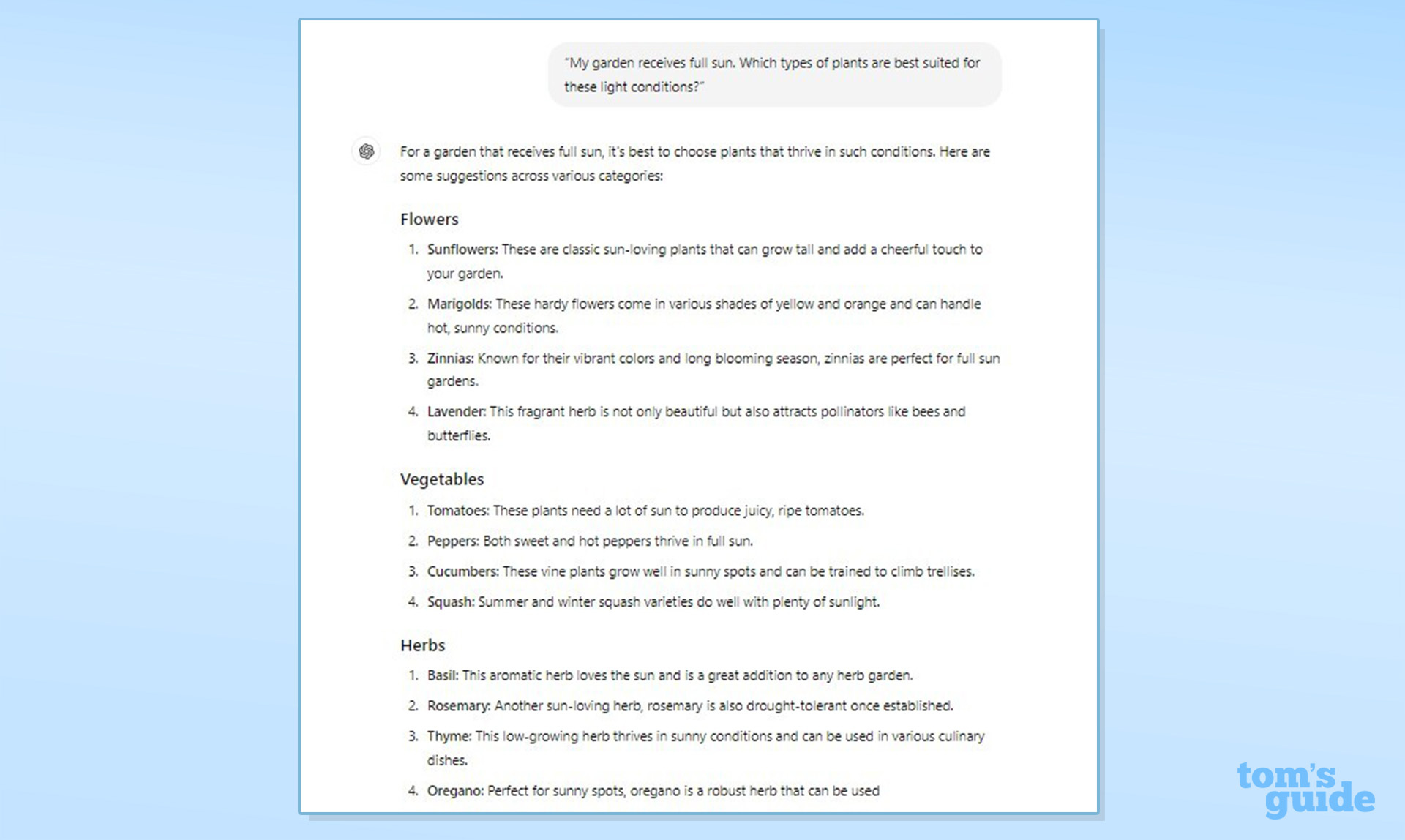
Prompt: “My yard receives full sun. Which types of plants are best suited for these light conditions?”
This answer was somewhat shorter than the above and a little disappointing. I expected a long list of plants, but instead, it gave five flowers and ornamental plants, three shrubs, three vegetables, three herbs, and three fruits. However, if you are a novice gardener, you won’t find the choice overwhelming, and it will give you a good foundation to start from.
Although the information on each plant wasn’t in-depth, it did provide a short blurb. It suggested growing marigolds, stating, "Bright and cheerful, they are heat-tolerant and repel pests".
To give it another go, I made the question more specific, asking: “My yard receives full sun. Which herbs are best suited for these light conditions?”
Bingo! This time, it came up with 10 suggestions, instead of three, proving that the more specific you are, the more detailed the answer.
3. Climate and USDA Planting Zones
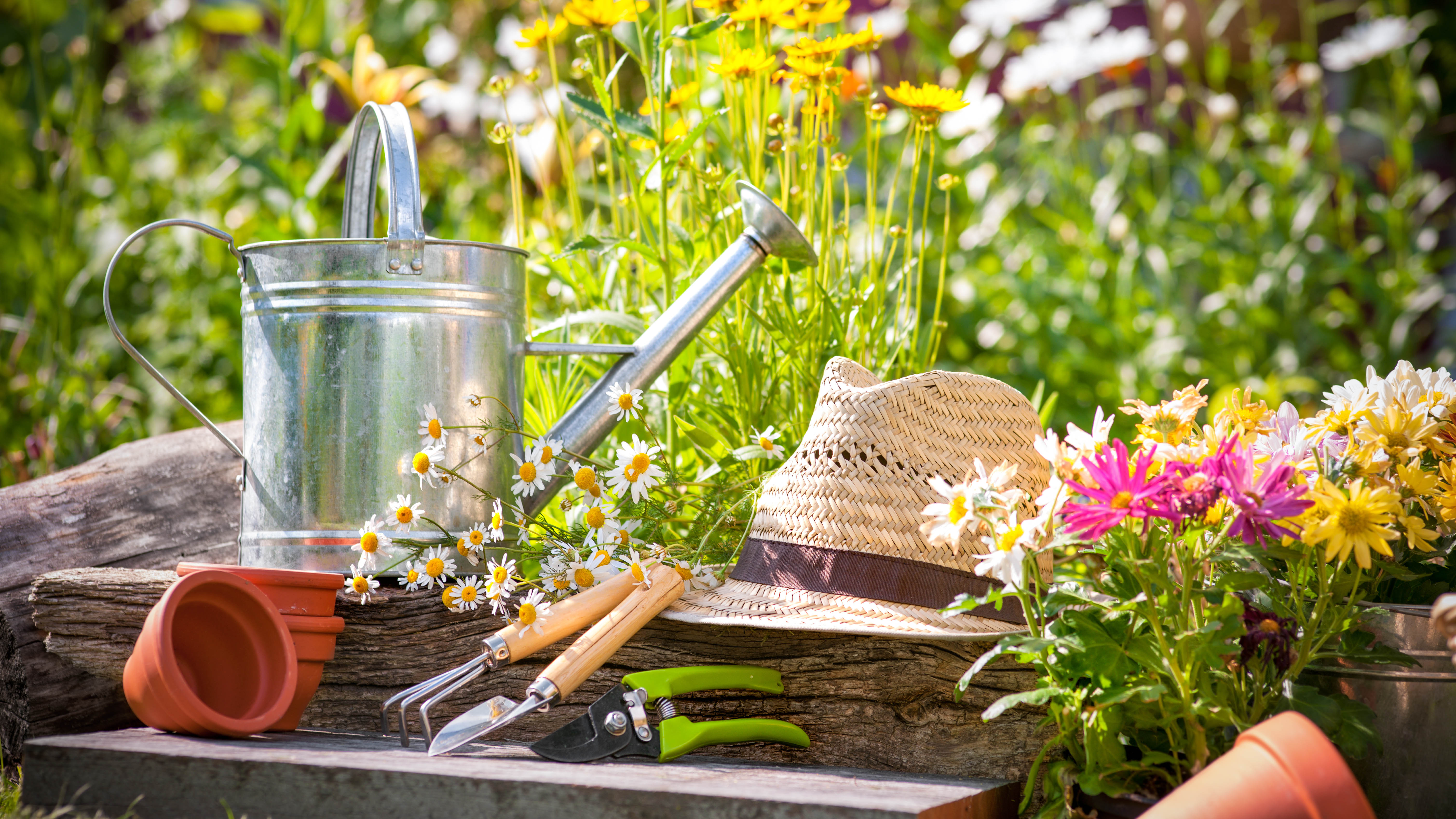
Prompt: “I live in USDA planting zone 8. What types of plants are suitable for my climate?”
Although my feet are firmly placed in the U.K., I wanted to see how ChatGPT responded to USDA Planting Zone questions. I had heard that it wasn’t great, so with this in mind, it performed better than I had expected.
Apart from detailing the climate and splitting the selection into different plant categories, it also reminded me to consider each plant’s specific needs, including sunlight, soil type, and water requirements.
Once again, I adjusted the question to ask what type of vegetables are suitable to grow in Zone 8. Again, the list was more extensive and split into cool-season and warm-season vegetables, with extra tips on extending the growing season.
For more detail, I then asked, ‘Can you grow tomatoes in Zone 8?’ I knew I’d get a positive response, but it also followed with some helpful growing tips.
4. Gardening experience
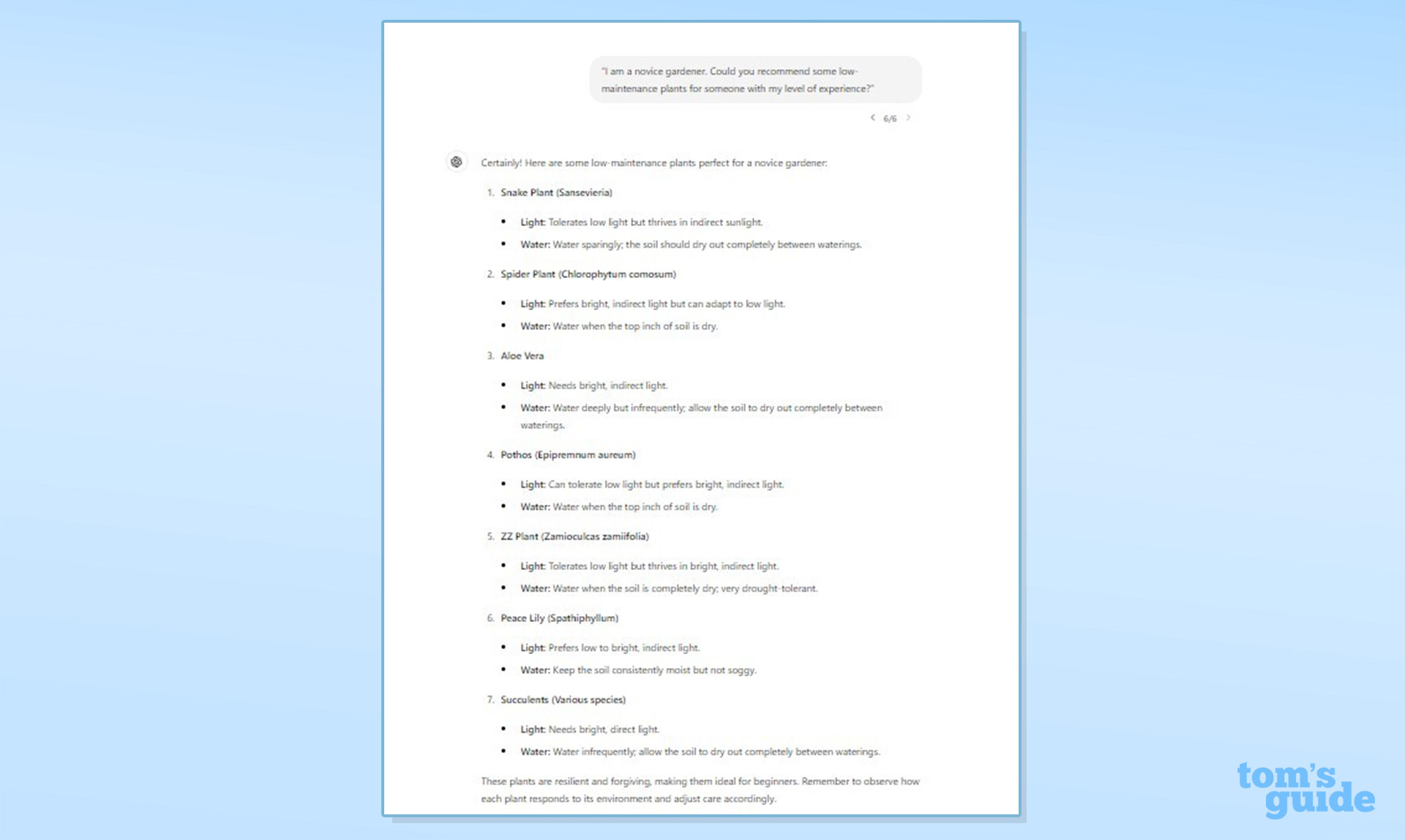
Prompt: “I am a novice gardener. Could you recommend some low-maintenance plants for someone with my level of experience?”
This response came back with a list of houseplants rather than garden plants, which I had intended. If you were a novice gardener, you may not have known that the plants listed weren’t suitable for outside. This type of question proved a point about being specific, especially if you are new to gardening or have limited experience.
5. Watering schedule
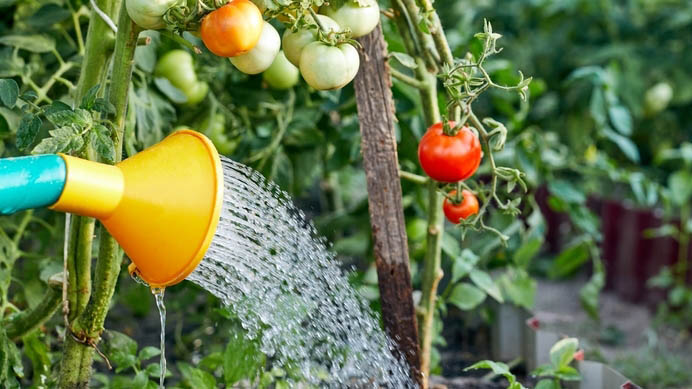
Prompt: “How can I establish a proper watering schedule for my yard? How much and how often do different types of plants need to be watered?”
I was doubtful how successful this answer would be because it wasn’t very specific. I hadn’t asked for details on any particular plant type or species. However, the information did state that watering will be dependent on your location, soil type, and plant type. Overall, it gave a good round-up of how to approach a watering schedule, giving general details on morning watering, deep watering, and the benefits of mulching to help the soil retain water.
The following information also gave advice on the frequency and quantity of watering, dividing the information into vegetables, flowers, shrubs and trees, and lawns. It also provided details on where adjustments are needed depending on soil type and how to monitor the moisture level of your soil.
It was a fairly good round-up for a novice gardener without being overwhelming.
I adjusted the question and based it on watering tomatoes. Interestingly, it included tips on watering techniques to avoid, including overhead watering, which can cause the foliage to become wet and lead to fungal disease. I was impressed.
6. Maintenance and pruning
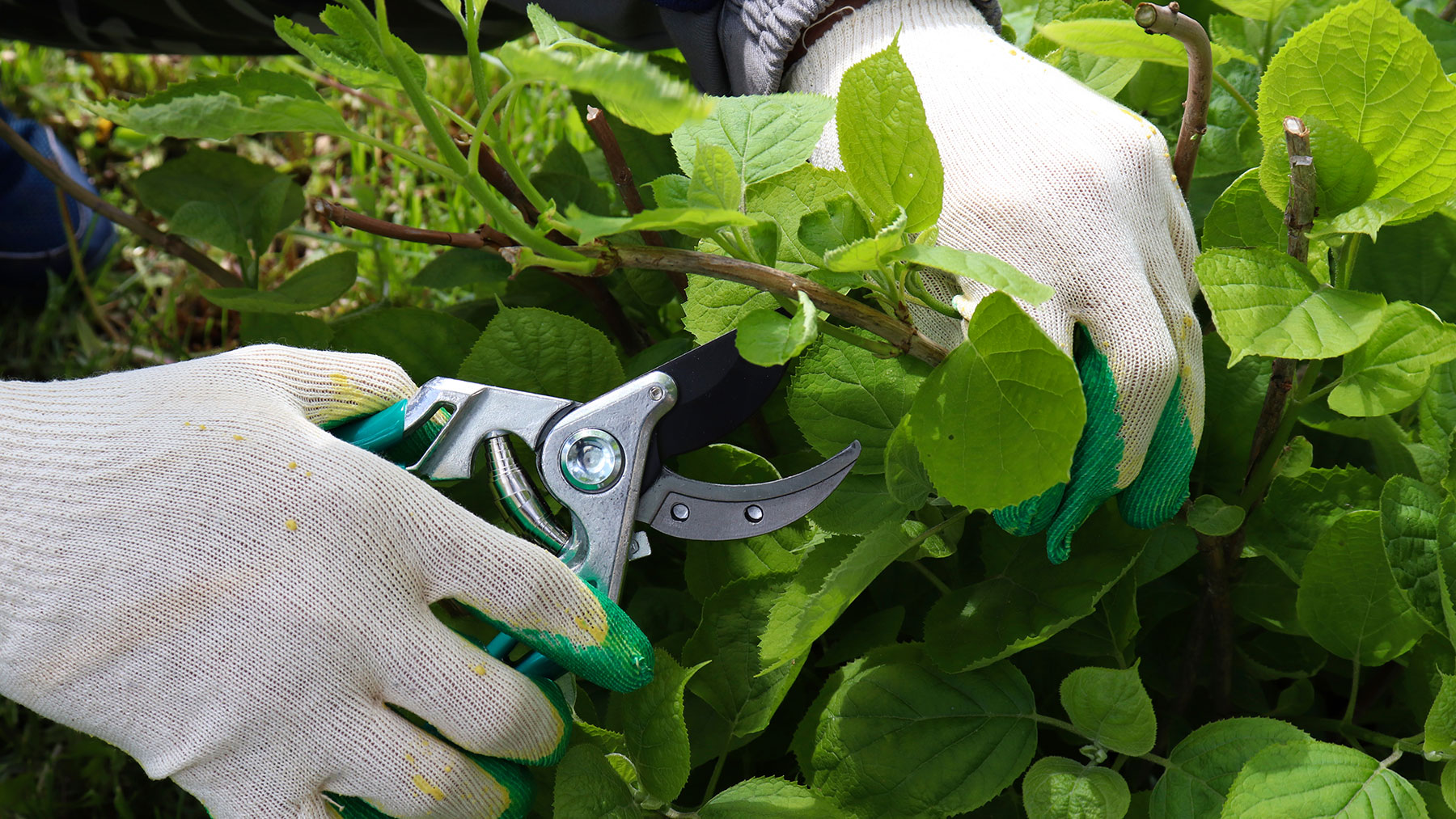
Prompt: “What is the best pruning schedule for my yard? When and how should I prune different types of plants?”
One of the hardest parts about gardening is knowing when to prune each plant. For instance, not all roses should be pruned at the same time of year. This was covered in an article I recently wrote on plants to prune in June, which advises that rambling roses can be pruned after blooming, although other types should be left and pruned when they are dormant. It was a similar story for clematis, which are split into three groups, each with a different pruning program.
However, when I input the same question a short time later, it didn't include the information on clematis.
ChatGPT also gave tips on using clean pruning shears and where and how to make the cut.
The Gardener’s Friend Ratchet Pruning Shears: $24 @ Amazon
If you want pruning shears for breaking up dead wood, but struggle with the strain on your hands and wrist, we recommend a ratchet design, like this one. It breaks up the movement of closing the shears into several steps to make the action easier. And during our best pruning shears test, we found this model to be one of the top performers. It’s easy to use and features a handy knuckle guard.
How does AI perform as a gardener’s aid?
Although I initially doubted using Chat GPT, I was surprised with the results. I quickly discovered that it responded better with more detailed prompts, but again, this depends on the level of advice and knowledge you seek.
I compare it to asking someone a gardening question, to gain the answer and then following up with another question. Can I grow tomatoes in Zone 8? What time of year can I plant tomatoes in Zone 8? What soil conditions do tomatoes prefer? How much sunlight do tomatoes need each day? How frequently should tomato plants be watered?
But, in fact, when I asked, ‘Can I grow tomatoes in Zone 8?’ it gave me all the advice without me needing to ask any further questions!
However, I’m not completely blown away by AI. The same information is available elsewhere, either in gardening books or within the homes and gardens content in Tom’s Guide! Plus, when using AI, without having a certain level of experience, there’s no guarantee that the information is correct, as the sources aren’t listed. However, AI gives you a good basis and a place to start, but you need to know the right questions to ask.
One thing is sure, nothing beats going outside in your yard and getting your hands dirty. AI can help you with your gardening journey, but it can’t do the physical work for you or get the enjoyment out of the end result.
More from Tom's Guide

Camilla Sharman has worked in publishing and marketing for over 30 years and has covered a wide range of sectors within the business and consumer industries both as a feature, content, and freelance writer.
As a business journalist, Camilla has researched articles for many different sectors from the jewellery industry to finance and tech, charities, and the arts. Whatever she’s covered, she enjoys delving deep and learning the ins and out of different topics, then conveying her research within engaging content that informs the reader. In her spare time, when she’s not in her kitchen experimenting with a new recipe, you’ll find her keeping fit at the gym. In the pool, stretching at a yoga class, or on a spin bike, exercise is her escape time. She also loves the great outdoors and if she’s not pottering about in her garden, she’ll be jumping on her bike for a gentle cycle ride.
